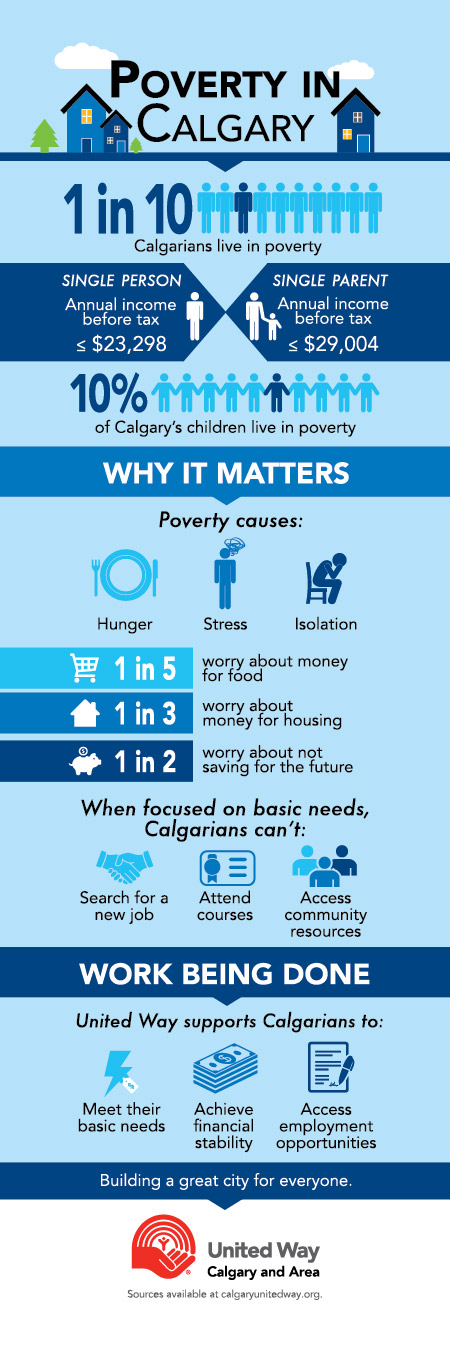The infographic below, produced by the United Way, takes a look at some facts about poverty in Calgary.
An astounding 1 in 10 Calgarians live in poverty. Accordingly, many Calgarians rely on government assistance to help them with their day to day expenses. Some Canadians look at reliance on government assistance as proof that individuals and families living in poverty are not looking for employment. However, that’s nothing more than a myth. Government assistance on its own does not provide households with financial security. Furthermore, in today’s job market, employment on its own does not guarantee freedom from poverty. In 2012, at least one member of the household was employed in a staggering 44% of all poor households in Canada. This is partially due to the rise of precarious employment: a decline in the number of well-paid jobs and an increase in both lower-paying jobs and temporary employment. Accordingly, even in situations where an individual is employed, there may still be the need for income supplements, as well as educational and employment supports.
With rising housing costs and standards of living costs, it’s no wonder that many poor families across Canada are struggling to make ends meet. The infographic states that 1 in 3 Calgarians worry about the cost of housing, and 1 in 5 worry about money for food. Low incomes affect the quality of life that parents can achieve for their households. Many families, when forced to choose between being able to put food on the table and having a place to stay, choose the latter. This isn’t just happening in Calgary, it’s a reality for poor households across Canada. A recent report by the Daily Bread Food Bank in Toronto states that in order to provide food for their children, some parents are forced to skip meals.
When we look at how struggling families are unable to even afford and meet their basic needs, the need for services like those provided by organizations like United Way Calgary become all too clear. This includes services directly targeting basic needs like food and housing, like food banks and affordable housing services. It also means funding or subsidizing costs associated with educational and employment services that can help Calgarians become competitive in today’s job market.
Funding services and supports is just one part of the solution. It’s important to enact policy that is informed by the role that structural factors play in determining how resources and opportunity are distributed. Gender, race and social status are all factors that play a critical role in determining who is poor. For example, research has regularly shown that Aboriginal Peoples are overrepresented amongst Calgary’s homeless and poor. While funding specialized programs targeting the needs of Aboriginal Peoples living in homelessness is a step in the right direction, it’s important to inform policy in such a way that structures that lead to such discrepancies in who are homelessness do not go unaddressed.
Preventative approaches often require greater investment and commitment, but that’s a small cost to pay for the long-term benefits associated with addressing the causes, rather than the symptoms, of poverty and homelessness.


